Are you thinking about starting a greenhouse? Greenhouses are a fantastic way for gardeners to maintain a controlled environment, ideal for growing a variety of plants that might not do well outdoors.
For those new to the world of greenhouse gardening, there are essential things to learn before getting started. This article aims to provide beginners with helpful tips and advice on establishing a greenhouse. We’ll guide you through the key steps, from selecting the right location to choosing plants that are suited to your climate. Let’s start with the basic elements of greenhouse gardening.
History of Greenhouses:
The word “greenhouse” comes from the French word for green, vert. The first greenhouses were built in Rome in the first century CE. These early greenhouses were called “luni-solariums” because they combined sunlight with fire heat.
Europeans constructed the first contemporary greenhouses in the 17th century. These early greenhouses were used to grow plants that could not survive the cold winters of Northern Europe, such as oranges and lemons.
Greenhouses are used for various purposes, including growing food, flowers, and trees; housing animals; and research. Greenhouses can be found worldwide in both warm and cold climates.
What is Greenhouse?
A greenhouse is a structure with walls and a roof chiefly of transparent material, such as glass, in which plants are grown. These constructions come in sizes from modest sheds to enormous complexes, and a miniature greenhouse is known as a cold frame.
Greenhouses provide a regulated and controlled environment for plant growth. The basic components of a greenhouse are light and heat, which can be provided by natural sources such as the sun or artificial sources such as electric lamps. Ventilation and humidity control are also important for a successful greenhouse.
The proportions and layout of the greenhouse may vary, but all greenhouses have some framework made of wood, metal, or plastic. The material used for the framework depends on the Greenhouse’s climate and the purpose for which it will be used.
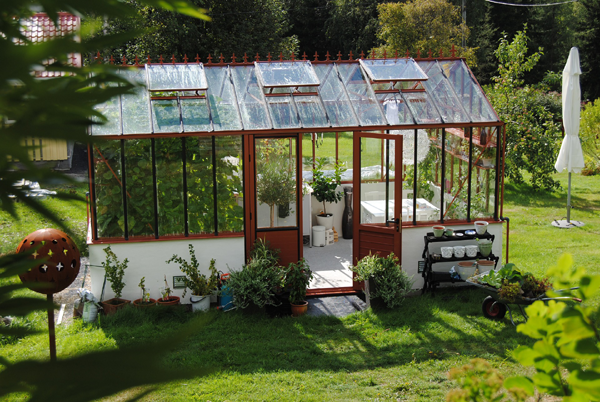
What are the Benefits of a Greenhouse?
There are many benefits of Greenhouse, including:
- Controlling the environment: Greenhouses allow growers to control the environment in which plants are grown. This includes factors such as temperature, humidity, ventilation, and light. By controlling these factors, growers can optimize conditions for plant growth and prevent problems such as pests and diseases.
- Extending the growing season: One of the main benefits of a greenhouse is that it allows growers to extend the growing season. In most cases, plants can be grown year-round in a greenhouse, and this is because greenhouses can be outfitted with heating and cooling systems that maintain optimal conditions for plant growth.
- Producing higher yields: Greenhouses can also produce higher yields than traditional outdoor farming. This is because controlled environment greenhouses allow growers to optimize conditions for plant growth. For example, by controlling the amount of light plants receive, growers can increase the number of fruits or vegetables produced per plant.
How Do Greenhouses Work?
Greenhouses work by retaining heat from the sun inside the structure, and this trapped heat helps create a warm environment ideal for plant growth. A greenhouse’s walls and roof are usually made of transparent materials, such as glass or plastic, allowing sunlight to enter the Greenhouse.
There are two types of greenhouses options available: passive and active. Passive greenhouses rely on the sun on to heat the air inside the Greenhouse, while active greenhouses use heating and cooling systems to regulate the temperature.
Greenhouses are useful because they can keep plants warm even when it’s cold outside. This lets people grow fruits, vegetables, and flowers all year. They are like a cozy home for plants, protecting them from bad weather and helping them grow better.
How to Set up Your Greenhouse?
If you are interested in setting up your Greenhouse now? Then there are a few things you’ll need to do to get started.
Site Selection and Preparation
Choosing the right location is one of the most crucial considerations when setting up a greenhouse. The location of your Greenhouse will have a big impact on its success. When selecting a location for your Greenhouse, there are a few things you need to take into account:
- Sunlight: One of the key requirements for successful plant growth is sunlight; plants need sunlight to photosynthesize and create food for themselves. Make sure to choose a location for your Greenhouse with plenty of sunlight throughout the day. A south-facing location is ideal.
- Wind: Another important factor to consider is wind. You don’t want to choose a location for your Greenhouse prone to strong winds, as this can damage the structure of your Greenhouse and or uproot your plants.
- Drainage: Good drainage is also essential for a successful greenhouse. Make sure to choose a location with good drainage, so your plants don’t end up sitting in water.
- Size: Another important consideration is the size of your Greenhouse, and you must ensure enough space for the size of the Greenhouse you want to build. If you’re planning on building a large greenhouse, you may need to clear some land to make room.
Once you’ve decided on the ideal spot for your Greenhouse, it’s time to start preparing the site. Begin by clearing away any debris or vegetation growing in the area. Then, use a shovel to dig a hole for each post that will support your Greenhouse. In general, the holes should be two feet deep.
Next, add some gravel to the area next to the bottom of each hole. This will help with drainage and prevent your posts from rotting. Once the gravel is settled, you can start setting your posts into the holes. Once all of the posts are in place, you can begin adding the rest of the greenhouse components.
Picking the Right Size
Once you have decided on the perfect location for your Greenhouse, the next step is to pick the right size. The size and dimension of the Greenhouse will be determined by a few factors, including the available space and the type of plants you want to grow.
A small greenhouse should suffice if you only plan to grow a few small plants. However, if you’re planning on growing a larger number of plants or even starting your nursery, you’ll need a larger greenhouse.
It’s also crucial to consider the height of the Greenhouse when selecting the size. The taller your Greenhouse is, the more headroom you’ll have to work in, and the lighter your plants will receive.
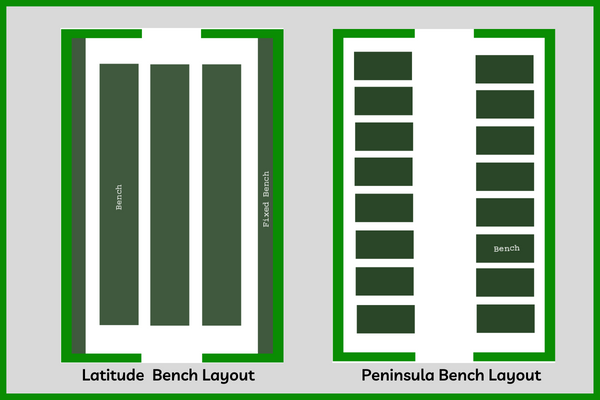
Construction and Materials
There are several different ways you can build your Greenhouse. The most popular option is to use PVC pipes and polyethylene film to create a simple frame. This type of Greenhouse is elementary to construct and is relatively inexpensive.
Another option is to use metal pipes and glass panels to create a more durable frame. This type of Greenhouse will last longer, but it is also more expensive to build.
After choosing the sort of frame you want to use, it’s time to gather the rest of the materials you’ll need. For the walls of your Greenhouse, you can use polyethylene film, fiberglass panels, or even old windows. The greenhouse roof can be made from polycarbonate panels, Plexiglas, or tempered glass.
Regarding the actual construction of your Greenhouse, there are a few things to keep in mind. First, ensure your foundation is level, and your posts are securely in place. Next, start attaching the walls to the frame, ensuring they are level and plumb.
Finally, add the roof panels and secure them in place. Once the roof is in place, you can add additional features, such as shelves or benches.
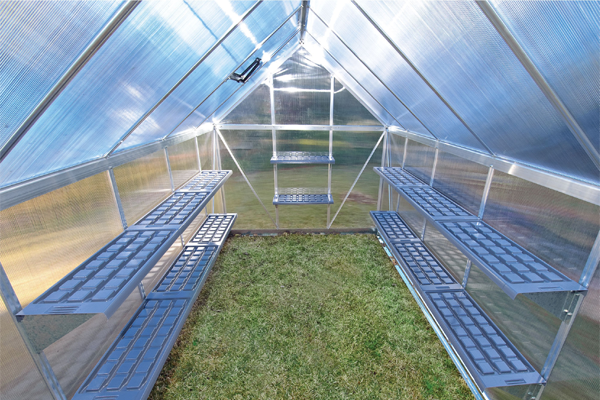
Selecting the Right Type of Greenhouse Kit
If you are uncomfortable with the construction, you can choose the Greenhouse kit. There are a few different types of greenhouse kits available on the market, so choosing the one best suits your needs and requirements are important.
The three most common greenhouse kits are freestanding greenhouses, lean-to greenhouses, and window greenhouses.
->Freestanding Greenhouses:
Freestanding greenhouses are independent buildings that can be positioned anywhere in your yard. They’re typically the largest and most expensive type of greenhouse kit, but they offer the most flexibility in terms of placement.
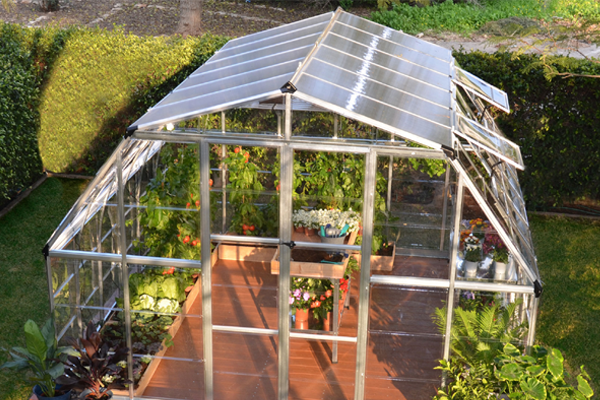
-> Lean-to Greenhouses:
Lean-to greenhouses attach to the side of another structure, such as your house. They’re a good choice if you don’t have a lot of space in your yard or want to save money on heating costs by attaching your Greenhouse to your house.
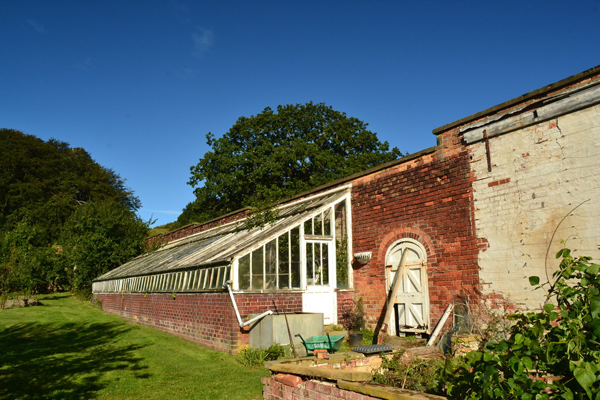
-> Window Greenhouses:
Window greenhouses are the smallest and most affordable type of greenhouse kit, and they’re typically placed on a windowsill or another small space in your home. These are a good choice if you’re limited on space or just starting with gardening.
No matter the type of greenhouse kit you choose, do your research and select the one that best suits your needs. With the right location, size, and type of greenhouse kit, you’ll be well on your way to success.
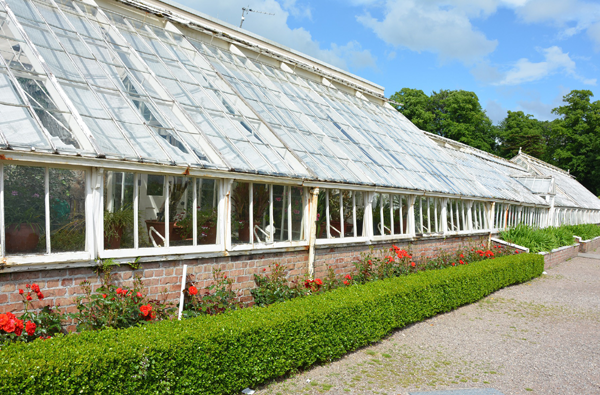
Ventilation and Temperature Control
One of the essential aspects of greenhouse gardening is ventilation. Greenhouses can get very hot, especially in the summer, so it’s vital to have a way to let the hot air out and the cool air in. The easiest way to do this is to install a fan in the Greenhouse. You can also open the door or windows to help with ventilation.
Another way to control the temperature in your Greenhouse is to use shading. This can be done with shade cloth, curtains, or even trees. Shading will help keep the greenhouse cooler in the summer and protect your plants from the harsh sun rays.
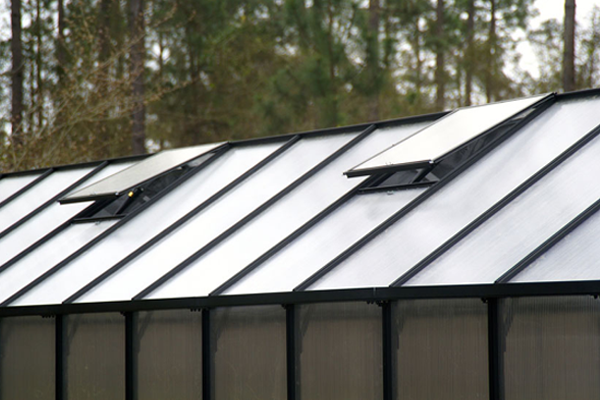
Heating and Cooling
Depending on your area, you may also need to heat or cool your Greenhouse. If you reside and live in a region with a cooler climate, you’ll need to find a way to keep your plants warm in the winter months. The best way to accomplish this is to install a heating system, such as a heater or a fan.
If you reside in a more tropical area, you may need to find a way to keep your Greenhouse cool in the summer. One option is to install an air conditioner, and another is to use a swamp cooler to help cool the air inside the Greenhouse using evaporation.
No matter what type of climate you live in, it’s essential to find a way to control the temperature inside your Greenhouse. By doing this, you’ll be able to grow healthy plants all year round.
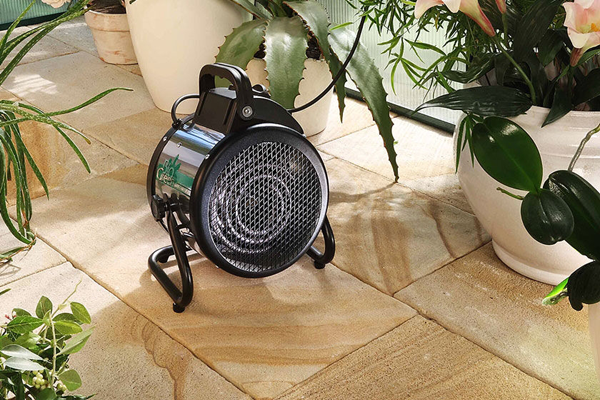
Watering System
When setting up your Greenhouse, the watering system is one final thing to consider. You’ll need to have a way to water your plants, and you don’t want to lug buckets of water back and forth.
There are several different choices for greenhouse watering systems. One popular option is the installation of a drip irrigation system. This arrangement provides water to your plant’s roots, which is more efficient than watering from above.
Installing a system of soaker hoses can be an additional choice. This system slowly leaks water along its length, providing gentle and even watering for your plants.
Regardless of the system type you choose, be sure to set it up before you start planting. That way, you won’t have to worry about it later on.
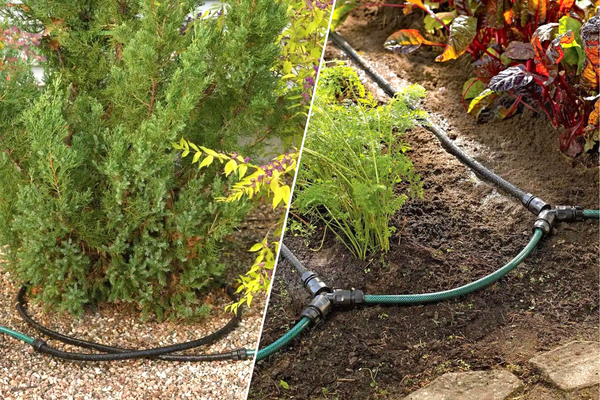
How to pick the best plants for a greenhouse?
A greenhouse is valuable to any garden, providing the extra gardener space to grow plants and extend the growing season. But before you can start reaping the benefits of your new Greenhouse, you must choose the right plants to grow inside it.
There are a few aspects to consider when selecting plants for your Greenhouse. First, you must consider what type of climate you want to create inside the Greenhouse. Are you looking for a tropical oasis or a more temperate environment? Once you’ve decided on the overall climate, you can narrow your plant choices by considering light and water requirements.
Light Requirements
When deciding, one of the most crucial factors to consider is the amount of light they need. Most greenhouses are built with clear walls and a glass or polycarbonate roof, which means they receive a lot of natural light. However, based on your geographic location and the season, you may need to supplement the natural light with artificial lighting.
If you live in a tropical climate, you can get away with growing sun-loving plants like tomatoes and cucumbers. However, if you live in a more northern climate, you’ll need to grow plants that don’t require as much sunlight, such as lettuce and spinach.
Water Requirements
Another vital element to take into account when selecting plants for Greenhouse is water requirements. Some plants, like cacti, prefer drier conditions, while others, like ferns, prefer more humid conditions.
If unsure how to create the right environment for your plants, you should talk to a greenhouse expert or someone at your local nursery. They’ll be able to help you choose the right plants for your particular climate and space.
Temperature Requirements
Finally, you need to think about the temperature requirements of your plants. Some plants, like tomatoes, prefer warmer temperatures, while others, like lettuce, prefer cooler temperatures.
If you’re unsure what temperature range is best for your plants, you should consult a greenhouse expert or someone at your local nursery. They’ll be able to help you choose the right plants for your particular climate and space.
Available Space
Finally, consider the space available for your plants; if you have a small greenhouse, select compact varieties that don’t require a lot of room to grow. Conversely, if you have a large conservatory, you can choose larger plants to fill the space and create a lush, green environment.
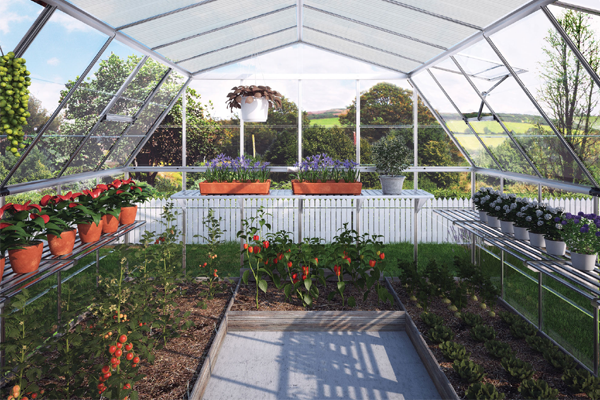
Greenhouse Gardening Tips:
Now that you know how to build a greenhouse and choose the right plant, it’s time to learn tips on making the most out of your new garden space. Here are a few things to keep in mind:
- Start with a small space. When starting, it’s important not to bite off more than you can chew. A more miniature greenhouse will be easier to manage and won’t require as much work to keep it running smoothly.
- Make sure you have good ventilation. Greenhouses can get very hot, so ensuring enough airflow is essential to keep things cool. Vents or fans can help with this.
- Consider your plants’ needs. Different plants have different requirements, so it’s important to consider what you want to grow before planting. Ensure you have the right soil, fertilizer, and light for your plants.
- Keep an eye on the temperature. Greenhouses can get very hot, so it’s crucial to monitor the temperature inside and ensure it doesn’t get too high.
- Water your plants regularly. Greenhouses can be very dry, so it’s vital to ensure that your plants get enough water.
- Be prepared for pests. Greenhouses can be a breeding ground for pests, so looking for them is essential. If you see any, take care of them immediately to prevent them from spreading.
- Keep your Greenhouse clean. It’s essential to keep your Greenhouse clean to prevent diseases from spreading. Wipe down surfaces and empty any standing water regularly.
- Inspect your plants regularly. It’s crucial to inspect your plants for pest activity or disease routinely. Take action immediately if you see anything abnormal.
- Harvest regularly. The best part about growing plants in a greenhouse is that you can harvest your plants all year round. Be sure to harvest your plants regularly to enjoy fresh fruits and vegetables all year.
- Be patient. Gardening takes time and patience, so don’t expect results overnight. Have faith in your plants and give them the time they need to grow.
Greenhouse gardening is a great way to grow healthy plants all year round. By following these tips, you’ll be able to get the most out of your new garden space.
What are the Disadvantages of a Greenhouse?
There are also some disadvantages of Greenhouse, including:
- High Cost: Greenhouses can be expensive to build and maintain. For instance, the expense of cooling and heating the greenhouse can be high.
- Require more maintenance: Greenhouses also require more maintenance than traditional outdoor farms. For example, greenhouses must be regularly cleaned to prevent the spread of pests and diseases.
- Can Overheat: Greenhouses can overheat, damaging plants or even causing fires if not properly ventilated.
Despite these disadvantages, greenhouses offer many benefits that make them popular for growers. When properly designed and maintained, greenhouses can provide an ideal environment for plant growth and allow growers to produce higher yields.
Final Thought:
A greenhouse can be a great addition to any garden, providing a year-round space to grow healthy plants. However, before you build a greenhouse, it’s important to consider the cost, the required maintenance, and the potential for overheating. With effort and forethought, you can build a beautiful and productive greenhouse that will provide you with years of enjoyment.
FAQ:
What is the function of a Greenhouse?
A greenhouse functions by providing the light, warm temperature, and air that is critical for the plant’s survival. The rest of the elements such as water, nutrients, and additional necessities to support the plant’s growth are up to the gardener.
Why is it called greenhouse?
Gases in the atmosphere, such as carbon dioxide, trap heat similar to the glass roof of a greenhouse. These heat-trapping gases are called greenhouse gases. During the day, the Sun shines through the atmosphere.
Who invented the greenhouse?
The French botanist Charles Lucien Bonaparte is often credited with building the first practical modern greenhouse in Leiden, Holland, during the 1800s to grow medicinal tropical plants.
What grows best in Greenhouse?
Tomatoes, peppers and eggplants are greenhouse darlings and will thrive in the warmth. Cucumbers, squash and zucchini will also work well and growing them up a trellis or wall is a great way to save a bit of space.
- Fuerte Avocado: History, Flavor, Calories, Benefits, And Uses - March 27, 2024
- Everything You Wanted to Know About Barhi Dates - March 23, 2024
- Everything You Wanted To Know About Beech Mushrooms - March 23, 2024

13 thoughts on “How to Start a Greenhouse For Beginners?”
Comments are closed.